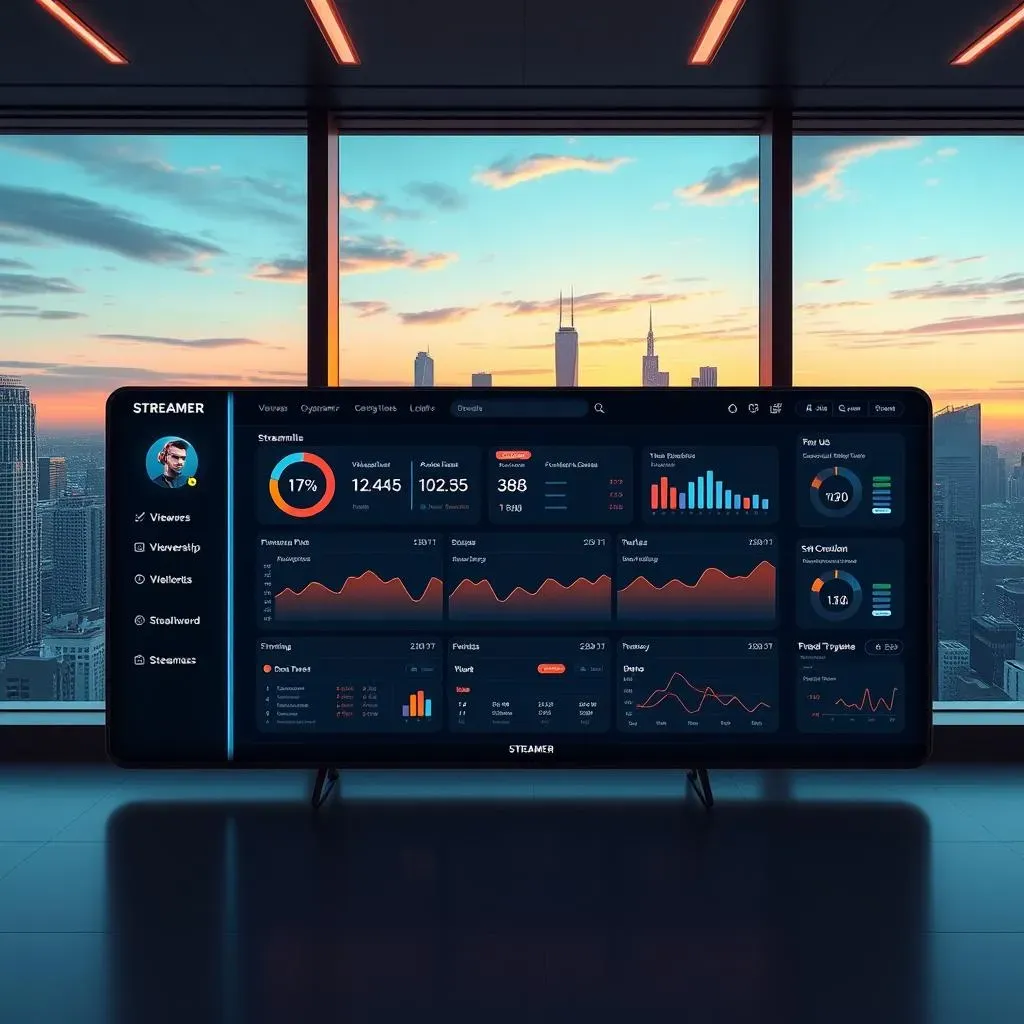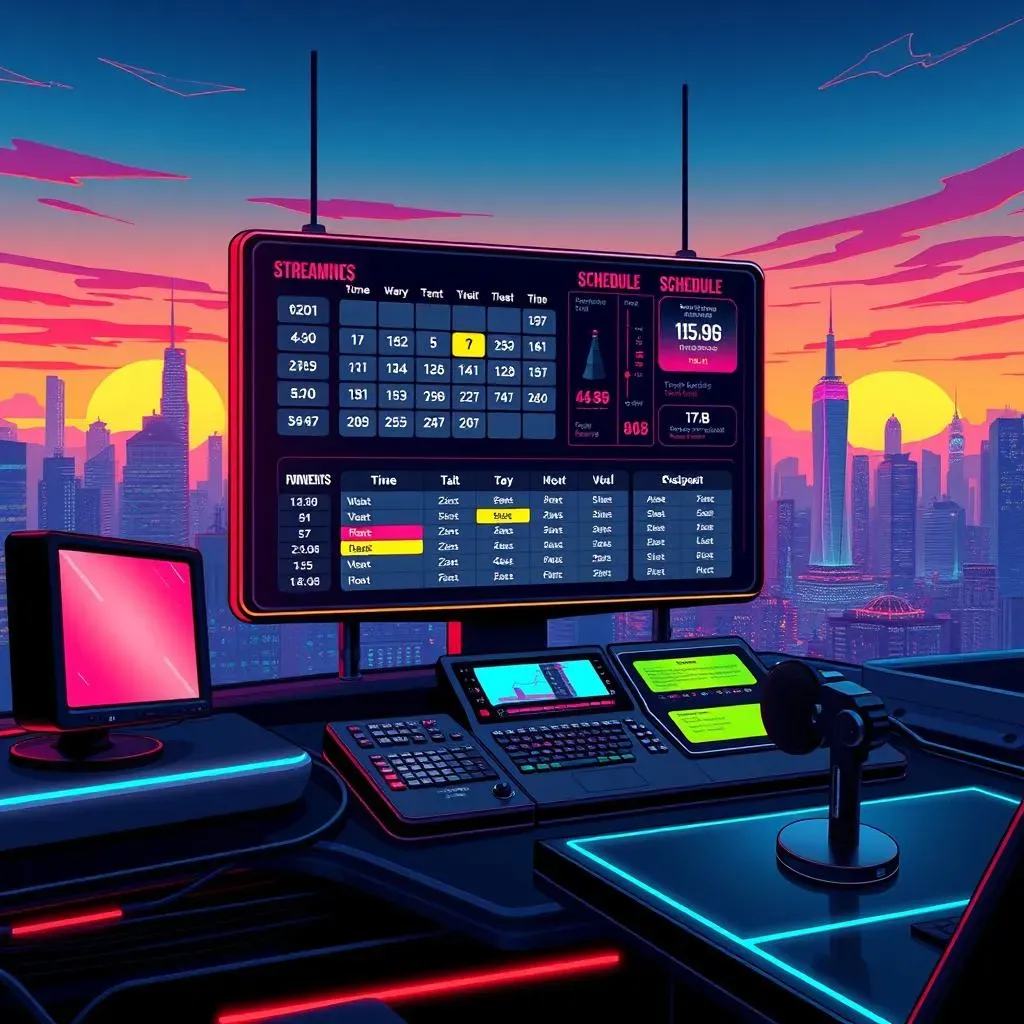Table of Contents
Ever wondered how your favorite streamers manage to keep their audiences engaged, build massive followings, and maintain a consistent presence online? The answer often lies in their meticulously crafted schedules. This article dives deep into the world of "famous streamers schedules," exploring the strategies and techniques they use to optimize their streaming time. We'll break down the science behind scheduling, examining how factors like audience demographics, game popularity, and personal commitments all play a role. We'll analyze real-world examples from top streamers, revealing the secrets behind their success. Think of it as a playbook for understanding how they build their empires, one stream at a time. By the end, you'll not only understand the intricacies of famous streamers' schedules but also gain actionable insights that you can use to create your own winning streaming plan, whether you're just starting or looking to level up your game. Let's get started!
Decoding Famous Streamers' Schedules: A Deep Dive

Decoding Famous Streamers' Schedules: A Deep Dive
Understanding the Basics of Stream Scheduling
So, you want to crack the code of famous streamers' schedules? It's not magic, I promise! It's a blend of strategy, audience understanding, and a dash of good old-fashioned hustle. Think of a streamer's schedule as a carefully crafted roadmap designed to maximize viewership and engagement. It's not just about *when* they stream, but also *what* they stream, and how they promote those streams. Consider the different time zones their audience might be in – a streamer popular in the US might schedule differently than one with a large European following. They're playing a game of optimization, balancing personal life, collaborations, and the ever-changing landscape of online trends.
Let's imagine a scenario: A popular streamer known for playing competitive games might schedule their streams around major tournaments or game releases. This leverages the hype surrounding those events to attract a larger audience. Or perhaps they've noticed their viewers are most active on weekday evenings. They'd adjust their schedule accordingly to maximize their reach. It's a constant process of analysis, adaptation, and iteration. It's about finding the sweet spot where their personal life, their content, and their audience’s habits all align perfectly.
Factor | Impact on Schedule |
|---|---|
Audience Demographics | Stream times adjusted to peak audience activity |
Game Releases/Events | Streams scheduled around major releases or tournaments |
Personal Commitments | Scheduled breaks or adjustments for real-life events |
Analyzing the Data: Viewership Patterns and Trends
Now, let's get into the nitty-gritty. Successful streamers don't just wing it. They analyze data. They track their viewership numbers, looking for patterns and trends. They use analytics tools to understand when their audience is most active, what games are performing best, and even what days of the week bring in the biggest crowds. Think of it like a scientist meticulously studying a complex experiment – except the experiment is their stream, and the data is the key to unlocking its potential. This data-driven approach isn’t just for the pros; even smaller streamers can benefit from tracking their viewership to optimize their time online.
Imagine a streamer notices their viewership spikes dramatically every Friday night. That's a valuable piece of information! They might decide to consistently stream on Friday nights, capitalizing on that established pattern. Or perhaps they find a particular game consistently draws a larger audience than others. That suggests a focus on that game during peak viewing times. It’s about using data to make informed decisions, rather than relying on gut feeling. This methodical approach is a cornerstone of successful streaming, allowing streamers to optimize their schedule for maximum impact and build a loyal, engaged community.
- Analyze viewer count throughout the week
- Identify peak viewing times
- Track performance of different games
- Use analytics tools to gather data
The Science Behind Successful Streaming Schedules: Timing is Everything

The Science Behind Successful Streaming Schedules: Timing is Everything
Understanding Peak Viewing Times
Think of it like this: There's a prime-time for everything, and streaming is no different. Successful streamers don't just randomly choose when to go live; they meticulously analyze their audience's viewing habits to pinpoint these peak times. It's about understanding when your target audience is most likely to be online and actively engaging with content. This involves looking at factors like their geographical location, their work schedules, and even the days of the week that tend to be more popular. It's a fascinating dance between understanding your audience and leveraging the optimal moments for maximum reach.
For example, a streamer targeting a North American audience might find that weekday evenings, after the workday ends, are their peak viewing times. Conversely, a streamer with a global audience might need a more flexible schedule, potentially streaming at different times throughout the day to catch viewers in various time zones. The key is to use data to identify these peak periods and adjust your schedule accordingly to maximize your viewership and engagement.
Time Zone | Potential Peak Viewing Time |
|---|---|
North America (EST) | 7 PM - 11 PM |
Europe (CET) | 7 PM - 11 PM |
Asia (JST) | 7 PM - 11 PM |
The Power of Consistency: Building a Loyal Viewership
Consistency is king in the streaming world. Imagine setting a regular schedule and sticking to it. This builds anticipation and allows viewers to plan their viewing schedules around yours. It fosters a sense of community and reliability. Viewers know when to expect you, and this predictability contributes significantly to viewer loyalty and retention. This is crucial for growth, as a loyal audience is more likely to engage, donate, and recommend your streams to others. It's the foundation upon which a successful streaming career is built.
Think of it like a favorite TV show: If the show aired at random times, you'd probably lose interest. But if it has a consistent schedule, you know when to tune in, and this predictability strengthens your connection to the show. The same principle applies to streaming. A consistent schedule helps to create a loyal and engaged audience who will return time after time, building a strong foundation for long-term growth and success. It's a simple yet incredibly powerful strategy that shouldn't be overlooked.
- Establish a regular streaming schedule
- Announce your schedule in advance
- Stick to your schedule as consistently as possible
- Communicate any schedule changes promptly
Strategic Scheduling: Maximizing Reach and Impact
Strategic scheduling goes beyond simply picking a time; it's about aligning your streams with relevant events and trends. For example, aligning your streams with the release of a new game, a major tournament, or even a trending topic can significantly boost your viewership. It's about capitalizing on opportunities to reach a wider audience and increase engagement. This involves staying informed about the gaming landscape, keeping up with trending topics, and strategically planning your streams to coincide with these events. It is a proactive approach, rather than a reactive one.
Consider a streamer specializing in a particular game. They might schedule a stream around a major tournament for that game, leveraging the increased interest and viewership associated with the event. Or, a streamer who covers current events might schedule a stream to discuss breaking news or trending topics, capitalizing on the increased audience interest. Strategic scheduling is about maximizing your reach and impact by aligning your streams with relevant events and trends. This proactive approach significantly increases the chances of attracting new viewers and engaging your existing audience.
Analyzing Famous Streamers' Schedules: Case Studies and Examples

Analyzing Famous Streamers' Schedules: Case Studies and Examples
Analyzing Famous Streamers' Schedules: Case Studies and Examples
Let's look at some real-world examples. Take Ninja, for instance. His schedule used to revolve heavily around Fortnite's peak hours, maximizing his reach during the game's popularity surge. He strategically incorporated collaborations with other big names, further boosting his viewership. Then there's Pokimane, who's known for her consistent, almost daily streams, building a loyal following through regularity and diverse content. She masterfully balances gaming with Just Chatting streams, catering to a broader audience. These are just two examples, but the key takeaway is the conscious effort these streamers put into analyzing their audience and optimizing their schedules for maximum impact. They don't just stream; they strategize.
Consider xQc, famous for his unpredictable, often marathon-length streams. His schedule is less rigid, reflecting his personality and content style. However, his large, highly engaged audience demonstrates that a consistent schedule isn't the only path to success. The key is understanding your audience and tailoring your approach accordingly. Some thrive on consistency; others thrive on spontaneity. It all depends on who you are and who you’re trying to reach. The most important aspect is a thoughtful, data-driven approach to planning your stream time.
Streamer | Scheduling Strategy | Key Success Factor |
|---|---|---|
Ninja | Aligned with game release/tournament schedules; frequent collaborations | Capitalizing on hype and maximizing reach |
Pokimane | Consistent daily streams; diverse content mix | Building a loyal audience through regularity |
xQc | Less rigid schedule; long, unpredictable streams | Authenticity and engaging personality |
Creating Your Own Winning Schedule: Tips and Tricks for Aspiring Streamers

Creating Your Own Winning Schedule: Tips and Tricks for Aspiring Streamers
Planning Your Stream Schedule: A Step-by-Step Guide
Alright, let's talk strategy. Creating a winning stream schedule isn't about throwing darts at a calendar; it's a strategic process. First, you need to understand your audience. Who are they? Where are they located? What are their schedules like? Once you have a solid grasp of your target audience, you can start to identify potential peak viewing times. Think about their work schedules, school schedules, and even local events that might influence their availability. This research is critical for maximizing your reach and engagement.
Next, consider your own availability. You need a schedule that's sustainable and doesn't burn you out. Be realistic about how much time you can dedicate to streaming without sacrificing other important aspects of your life. A balanced approach is key. Factor in time for content creation, game preparation, editing, and even just relaxing. Don't spread yourself too thin; a consistent, manageable schedule is far more effective than an ambitious, unsustainable one that eventually leads to burnout.
Step | Action |
|---|---|
1 | Analyze your target audience |
2 | Identify peak viewing times |
3 | Assess your personal availability |
4 | Create a sustainable schedule |
Promoting Your Schedule: Getting the Word Out
Having a great schedule is only half the battle. You need to make sure your audience knows when you're streaming! Promote your schedule across all your social media platforms. Use engaging graphics, clear announcements, and even countdown timers to build anticipation. Consider using scheduling tools that automatically post your schedule across multiple platforms, saving you time and effort. Consistency is key here, too; regular updates and reminders keep your audience informed and engaged. Don't underestimate the power of a well-executed promotional strategy.
Think about engaging with your community. Ask for feedback on your schedule. Are there times that don't work for them? Are there specific days or times they'd prefer? This interaction fosters a sense of community and allows you to tailor your schedule to best suit your audience's needs. Remember, it's a two-way street; your audience is a valuable resource in refining your streaming strategy. By actively seeking their input, you show that you value their engagement and build a stronger, more loyal community.
- Use social media to promote your schedule
- Employ scheduling tools for automation
- Engage with your community for feedback
- Regularly update your schedule and communicate any changes